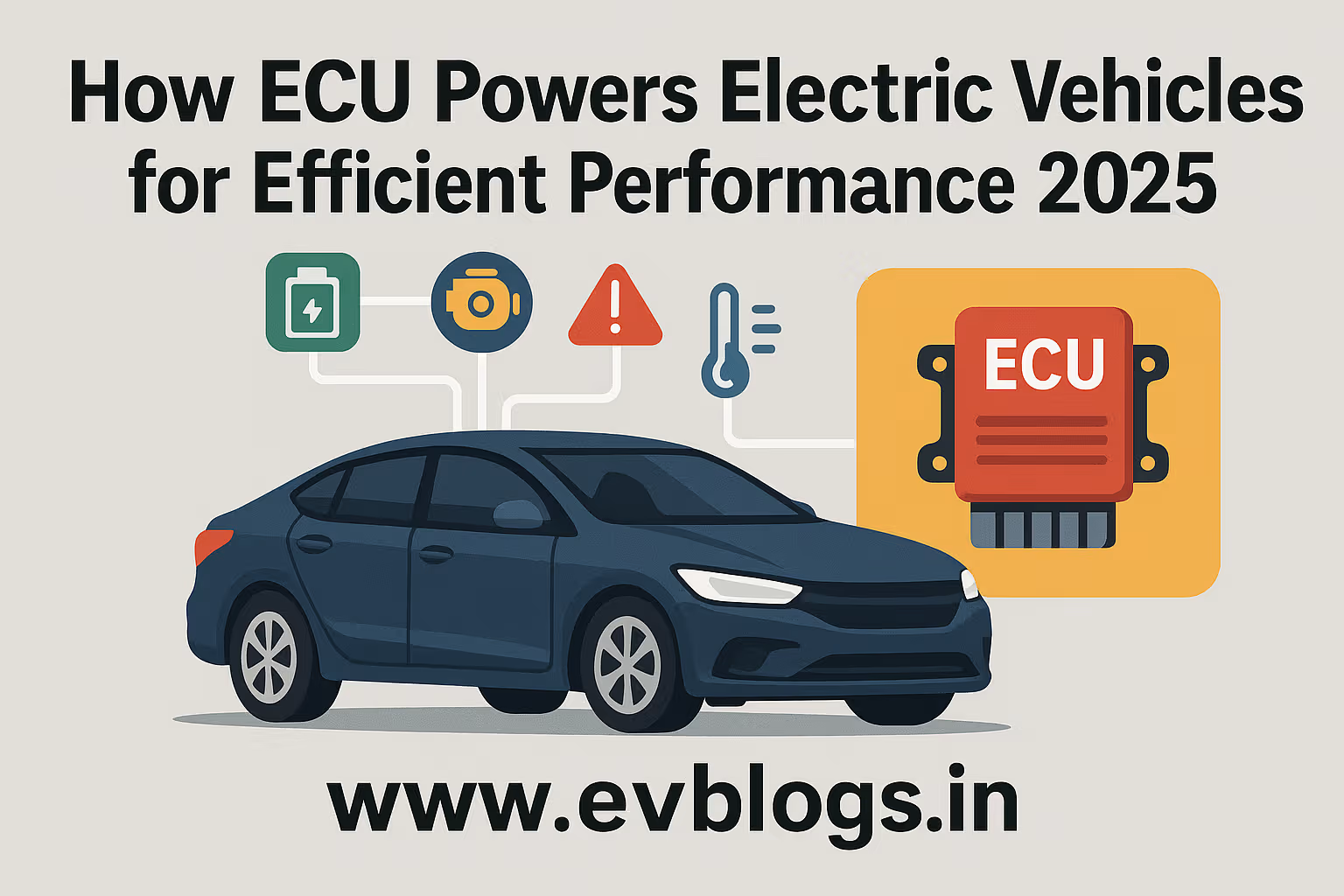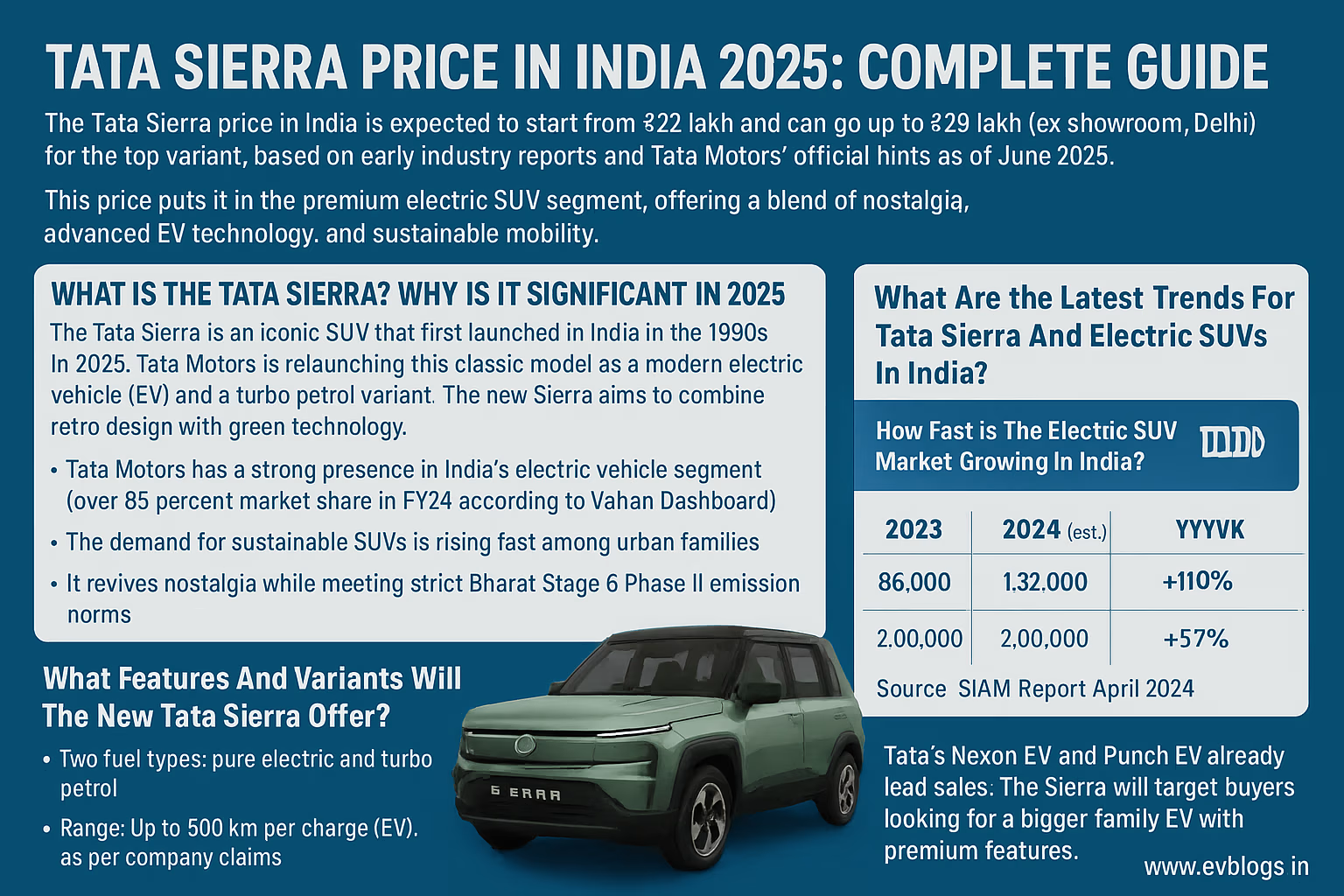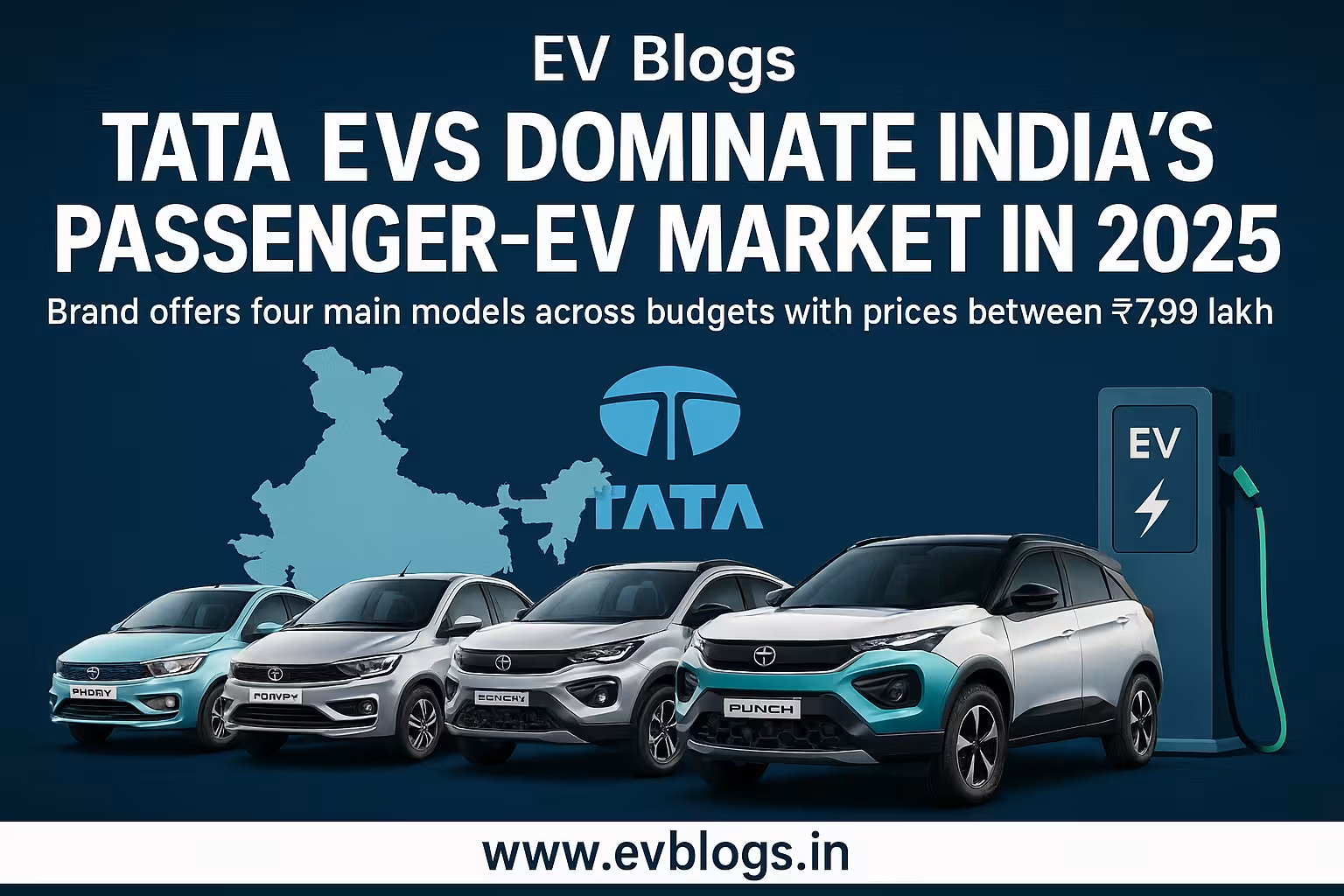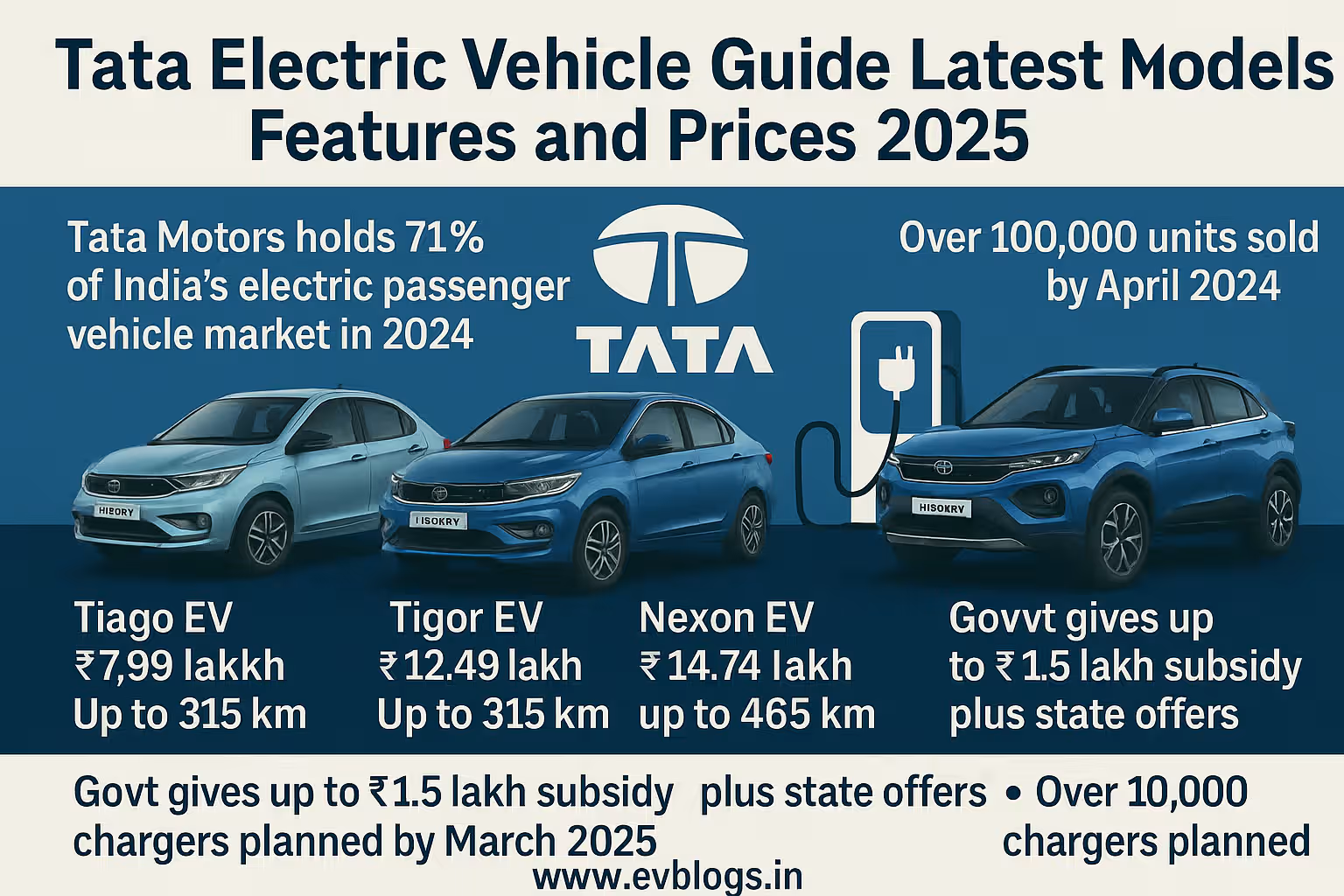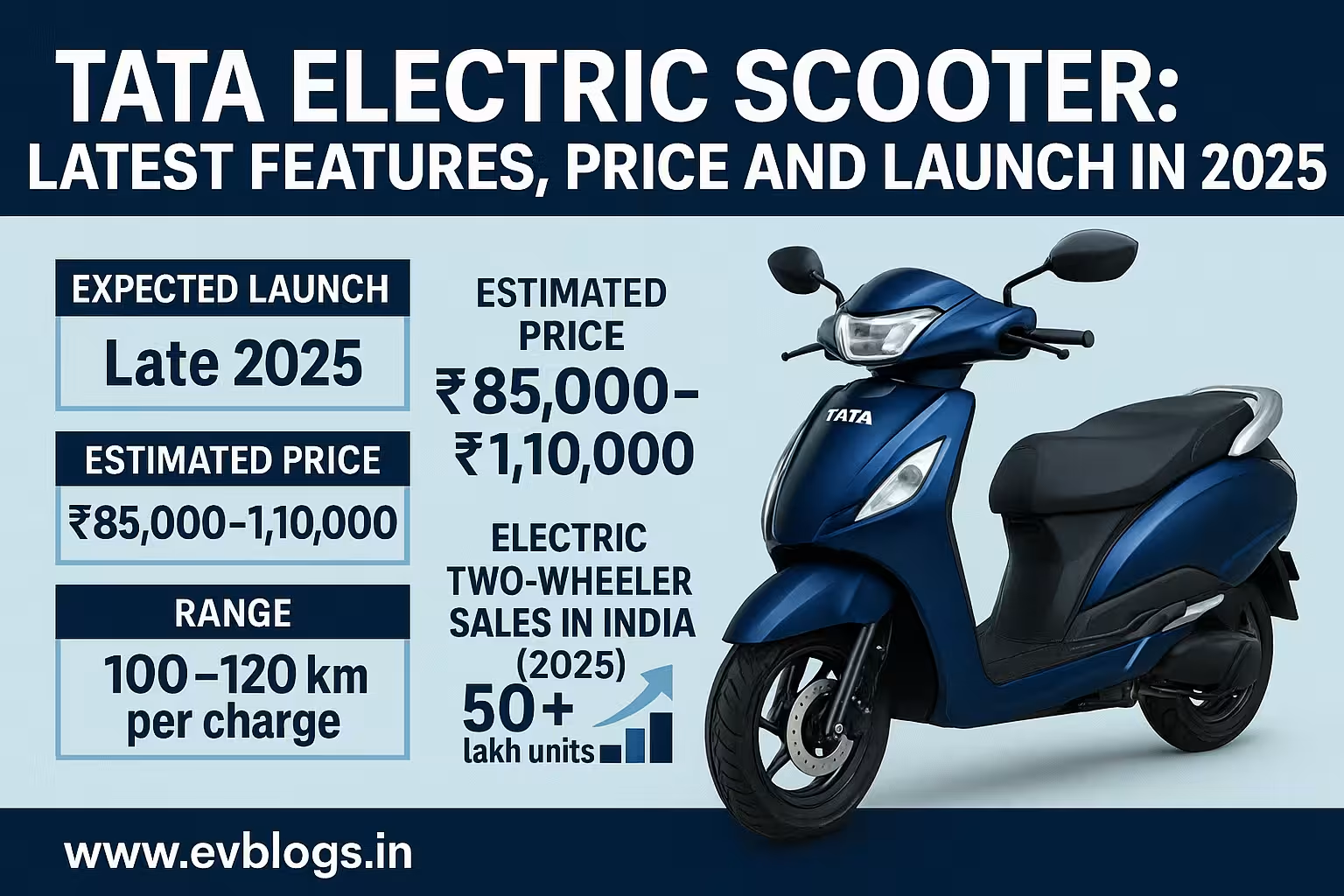Hedhvick Hirav
Hedhvick Hirav is a dedicated EV researcher and editor with over 4 years of experience in India’s growing electric vehicle ecosystem. Their contributions have been recognized in leading sustainability publications and automotive journals.
Summarize & analyze this article with
Choose an AI assistant and open this article directly:
Tip: if the AI doesn’t fetch the page automatically, paste the article URL manually.
What is the FAME II Scheme and Why Does it Matter for Indian EV Users?
Are you wondering what exactly the FAME II scheme is, and why everyone in India is talking about it when it comes to electric vehicles (EVs)? Let’s break it down for you.
FAME II— the Faster Adoption and Manufacturing of Electric Vehicles in India Phase II— is a key government scheme launched in April 2019 and extended till March 2025. The goal? Make it easier and more affordable for you to buy electric vehicles like scooters, bikes, cars, and buses. The scheme aims to boost EV sales, create jobs, and help reduce pollution.
Here’s why FAME II matters:
- It significantly reduces the cost of electric vehicles in India via direct subsidies.
- The scheme supports the development of charging infrastructure across cities.
- Helps India step towards its ambitious climate targets by reducing petrol-diesel vehicles.
With the Indian EV market expected to reach around $47 billion by 2027 (IBEF data), your options are only going to get better every year.
Expert Insight:
Did You Know? FAME II is part of the National Electric Mobility Mission Plan (NEMMP) 2020, aiming for at least 30% EV penetration in India by 2030!
How Does the FAME II Scheme Work in 2025?
Understanding how FAME II benefits you as a customer or business owner is crucial. Here’s a simple explanation:
- The government allocates a budget of ₹10,000 crore for FAME II, running till March 2025.
- Vehicles that meet specific criteria (battery capacity, range, speed) are eligible for direct incentives.
- OEMs (Original Equipment Manufacturers), like Tata, Ola, Ather, and others, pass on these subsidies to you upfront.
So when you buy an EV eligible under FAME II, the price you pay already includes the subsidy reduction—no extra paperwork for you!
How you benefit:
- Lower purchase price of e-scooters, e-bikes, e-cars, and e-buses.
- Manufacturers offer FAME II eligible vehicles with enhanced features and after-sales support.
- Growing network of public charging stations being funded by the same scheme.
Did You Know?
As of 2025, over 11 lakh EVs have been sold under FAME II with the government supporting over 9,700 electric buses across Indian states!
Which Vehicles Qualify for FAME II Subsidies in 2025?
You might wonder: Can any electric vehicle get FAME II subsidy, or are there certain rules? Here’s what actually qualifies:
Electric Two-Wheelers (Scooters & Bikes)
- Must have a minimum top speed of 40 km/h.
- Range: At least 80 km per charge.
- Lithium-ion battery pack only.
- Useful life cycle and warranty requirements.
Electric Cars & Taxis
- Only commercial or fleet vehicles (not most private cars).
- Should meet safety, range, and battery norms.
- Used for ride-hailing or public transport.
Electric Buses
- Includes state-run and private contract city buses.
- Minimum range and capacity criteria.
- Supports Inter-city and Intra-city routes.
Electric Three-Wheelers (e-rickshaws, autos)
- Range of at least 80 km.
- Suitable battery chemistry (no lead-acid).
Exclusions
- Petrol-using hybrids.
- Personal electric cars not covered (except for fleet operators).
EVs approved for FAME II get these benefits:
- Lower ex-showroom price.
- Extended manufacturer support and in some cases, free charging for a fixed duration.
What is the Latest State of FAME II Scheme in 2025?
FAME II has undergone several changes since launch, so what’s new for you in 2025?
- The scheme has been extended till March 31, 2025.
- Incentives for electric two-wheelers have been reduced from ₹15,000 per kWh to ₹10,000 per kWh from June 2023 onwards, but with cap adjustment to keep popular models affordable.
- More than 7,200 public charging stations are operational and hundreds expected by end-2025.
- Over 1,200 models of two-wheelers, three-wheelers, and e-buses are FAME II certified.
- Many Indian states now top up the central FAME II subsidy with their own, making EVs even cheaper in places like Delhi, Maharashtra, Gujarat, Karnataka, and Tamil Nadu.
Key updates for buyers in 2025:
- Total allocation under FAME II has been utilized fast; check eligibility with the dealer before booking.
- Prices may vary across states depending on their own EV policies.
Expert Insight:
India targets 1 crore electric vehicle sales by 2027, with top brands upgrading existing FAME II models for the 2025 lineup!
Which Popular EV Models are Eligible Under FAME II in 2025?
It’s easy to get confused with so many new options. Here’s a handy comparison of top FAME II-eligible EV models across segments, updated for 2025:
| Brand & Model | Segment | Battery Size | FAME II Subsidy | Approx. Price After Subsidy* | Claimed Range | Fast Charging | State Top-Up? | Warranty (Years) |
|---|---|---|---|---|---|---|---|---|
| Ola S1 Air | E-Scooter | 3 kWh | ₹30,000 | ₹84,999 | 125 km | Yes | Yes | 3 |
| Ather 450X Gen 4 | E-Scooter | 3.7 kWh | ₹37,000 | ₹1,10,000 | 146 km | Yes | Yes | 3 |
| TVS iQube ST | E-Scooter | 4.56 kWh | ₹40,000 | ₹1,22,000 | 145 km | Yes | Select States | 3 |
| Bajaj Chetak Premium | E-Scooter | 3 kWh | ₹30,000 | ₹1,15,000 | 113 km | No | No | 3 |
| Hero Vida V1 Plus | E-Scooter | 3.44 kWh | ₹34,000 | ₹1,12,000 | 110 km | Yes | Yes | 5 |
| Tata Tiago.ev XE (Fleet) | Electric Car | 19.2 kWh | ₹1,20,000 | ₹8,99,000 | 250 km | Yes | No | 3 |
| Tata XPRES-T EV | Electric Sedan | 21.5 kWh | ₹1,40,000 | ₹9,99,000 | 213 km | Yes | No | 3 |
| Mahindra Treo Yaari | E-Rickshaw | 7.37 kWh | ₹55,000 | ₹2,55,000 | 131 km | No | Yes | 3 |
| Piaggio Ape E-City | E-Auto Rickshaw | 7 kWh | ₹50,000 | ₹2,25,000 | 110 km | No | Select States | 3 |
| JBM ECOLIFE E-Bus | E-Bus | 186 kWh | ₹30,00,000 | ₹1,25,00,000 | 220 km | Yes | Customised | 5 |
*Approximate prices post-FAME II, before State subsidy or dealer offers. Check exact dealership rates.
Here’s a deeper dive into each segment:
- Ola, Ather, TVS, Bajaj, Hero: Industry leaders for urban commuters, each offering unique features, after-sales networks, and regional presence.
- Tata Tiago.ev, XPRES-T: Most affordable electric cars for fleets/taxi use, supported in multiple metro cities.
- Mahindra Treo, Piaggio Ape: Best for cargo or passenger three-wheelers in city and semi-urban markets.
- JBM and Olectra Buses: Preferred for state/municipal corporations upgrading their public bus fleet.
Did You Know?
Delhi NCR, Bangalore, and Pune have the highest sales of FAME II electric two-wheelers in India!
What is the Exact Amount of FAME II Subsidy You Get in 2025?
Let’s clarify what the FAME II scheme pays you—right at purchase!
As of 2025, the FAME II incentives are:
Electric Two-Wheelers:
₹10,000 per kWh of battery, max 15% of vehicle cost.Electric Three-Wheelers:
Up to ₹50,000 or more, depending on battery size and vehicle type.Electric Taxis/Cars (Fleet):
Up to ₹1.4 lakh per vehicle for certified models. Private cars not included.Electric Buses:
Up to ₹30 lakh per vehicle for eligible city bus operators.
Fast facts:
- Direct cash benefit at the time of purchase, so you do not need to submit subsidy claims afterward.
- Subsidy amount reduces if vehicle price or battery capacity is lower.
- Some states like Delhi, Maharashtra, Gujarat, and Karnataka offer extra subsidy (up to ₹15,000 for bikes, ₹1.5 lakh for cars) beyond FAME II.
Expert Insight:
FAME II support is limited to a fixed number of vehicles by company/model—check with your dealership for real-time stock!
When Should You Buy an EV to Get FAME II Subsidy?
The most common user doubt: Is there a deadline or limited period to claim the FAME II benefits?
Here’s what matters in 2025:
- FAME II is available till March 31, 2025, or until allocated funds run out.
- Earlier you buy, better your chances of getting the full eligible subsidy.
- As sales boom, some brands may exhaust their FAME II quota before the deadline.
- State-wise policies may also expire or revise without notice.
Actionable tips for you:
- Always ask dealers to confirm “FAME II available” status for your preferred variant before paying a booking amount.
- Watch out for state announcements on changes to their own top-up schemes.
Did You Know?
In mid-2023, high demand led to rapid exhaustion of central subsidies in popular segments, prompting some brands to revise pricing.
Why Should You Care About FAME II Scheme as a Buyer in 2025?
You might ask yourself: Is FAME II really that big a deal? Why should I plan my EV purchase around it?
Benefits you get:
- Upto ₹55,000 price reduction on scooters, ₹1.4 lakh on cars, or more.
- Faster break-even against petrol/diesel cost (many commuters recover extra cost in 2-3 years).
- Best resale value and support for FAME II-certified models, since they’re widely adopted.
- More charging stations, better service, and parts availability for FAME II-linked brands.
- Easier to access low-cost financing and insurance for subsidy-eligible EVs.
For fleet owners:
- Bulk deals on taxis, rickshaws, and buses.
- Access to special state green mobility contracts.
For city dwellers:
- Cleaner air, quieter streets, priority parking, special lanes, or toll exemptions in several cities.
Expert Insight:
According to NITI Aayog data (2025), EV users save up to 70% on running costs compared to petrol vehicles, thanks to FAME II discounts and zero tailpipe emissions!
How Can You Check If Your Vehicle or Dealer is FAME II Approved?
To avoid confusion or fraud, it’s crucial to check official approval status.
Steps you should follow:
- Visit the official FAME India portal https://fame2.heavyindustries.gov.in/
- Click on “Model Approval List” for real-time data.
- Ask your dealer for the FAME II certificate for the exact variant.
- Check if your state offers additional top-up subsidy for the chosen vehicle.
Red Flags:
- Dealers demanding upfront cash for “helping you claim subsidy.”
- Vehicles not listed/approved but advertised as “FAME II eligible.”
- Used vehicles or retrofitted EVs are not covered; benefits are only for new vehicles.
Helpful resources:
- Ministry of Heavy Industries official website
- State EV policy portals (Delhi EV, Maharashtra EV, Gujarat EV, etc.)
Did You Know?
Genuine FAME II models have government-registered chassis numbers for tracking and subsidy disbursal!
Which States Offer Maximum Benefits Apart from FAME II in 2025?
Some states go the extra mile to make your EV even more affordable:
| State | State Subsidy (Two-Wheeler) | Additional Benefits | Zero Registration? | Key Features |
|---|---|---|---|---|
| Delhi | ₹10,000 per kWh (max ₹30k) | Scrappage incentive up to ₹7k | Yes | Road tax waived, priority charging |
| Maharashtra | ₹5,000 per kWh (max ₹25k) | Early subsidy up to ₹5k | Yes | Free registration |
| Gujarat | ₹10,000 per kWh (max ₹20k) | Student discount | Yes | Low-cost electricity for home charging |
| Karnataka | Nil | Road tax/registration free | Yes | E-mobility zones in Bengaluru |
| Tamil Nadu | Nil | Registration/road tax free | Yes | Industry incentives for OEMs |
| Telangana | Up to ₹15,000 (one-time) | Road tax/registration free | Yes | E-auto incentives for women drivers |
| Rajasthan | ₹5,000 per kWh (max ₹20k) | Road tax waiver | Yes | Annual incentives for fleets |
| Uttar Pradesh | Up to ₹20,000 (two-wheeler) | Road tax waiver | No | Special loans for e-rickshaws |
| Kerala | Up to ₹20,000 | Road tax waiver | Yes | Green vehicle loans |
| Andhra Pradesh | Up to ₹15,000 | Road tax waiver | Yes | Charging infra subsidy |
What this means for you:
- You can stack the central FAME II subsidy and the state subsidy for maximum savings.
- Some states offer additional perks like exclusive EV lanes, parking, and interest-free EV loans.
- States may update or stop their schemes at any time, so it’s best to purchase early.
Expert Insight:
Delhi buyers saw 40% of new two-wheeler registrations in 2024-25 being electric, due to double subsidies and zero road tax!
What Are Some Real-World Experiences: User Stories and Case Studies in 2025?
Let’s learn from Indians who recently bought EVs using the FAME II benefits:
Case Study 1: Priya from Pune
- Priya purchased an Ather 450X in January 2025. The ex-showroom price before subsidy was ₹1.45 lakh.
- After FAME II, the price dropped to ₹1.1 lakh. The Maharashtra state subsidy slashed another ₹5,000.
- She charges at her apartment complex with a low residential tariff. In 4 months, Priya says she’s saved over ₹3,000 on petrol.
Case Study 2: Aditya, Delhi Fleet Operator
- Aditya bulk ordered 50 Tata Tiago.ev fleet taxis. With FAME II and the Delhi EV policy, the effective cost per car became almost ₹1.4 lakh lower.
- Maintenance is less than half of equivalent petrol taxis. Aditya expects to break even in just two years due to high daily running.
Case Study 3: Shyam, rural e-rickshaw owner in UP
- Shyam switched to a Mahindra Treo in early 2025. With FAME II and UP’s local EV loan scheme, his EMI is less than his earlier daily spend on petrol/diesel.
- He earns extra since local passengers prefer quieter, cleaner rides. No more engine breakdowns every few months.
Learnings from these stories:
- Huge upfront savings, faster break-even, and real monthly benefits.
- Owners recommend choosing trusted brands and ensuring both central and state subsidies before finalizing the deal.
- Popular cities like Delhi, Bangalore, Maharashtra, Ahmedabad are best for buyers due to double subsidies and more charging points.
- For rural areas, the cost benefit is less on day one, but maintenance savings are much higher in the long run.
Did You Know?
Many metro cities now let EV buyers register and get number plates online without ever visiting the RTO!
How is FAME II Related to EV Charging Infrastructure in India?
A big worry for first-time buyers is—where will I charge my EV? FAME II doesn’t just give discounts on purchase, but fuels a whole charging ecosystem.
Here’s what you should know in 2025:
- Over 7,200 charging stations funded or commissioned under FAME II across major metros and highways.
- The government has set a target of one charging station every 3 km in cities and every 25 km on highways by 2025.
- FAME II offers special capital support and incentives for setting up both slow (AC) and fast (DC) chargers.
- Several PSU oil companies like IOCL, HPCL, BPCL partner under the scheme to install EV chargers at existing petrol pumps.
How you benefit:
- Rapidly growing public charging network means most cities now have 50-100+ public chargers per lakh population.
- Cheaper, reliable, and fast-charging at malls, office parks, city centers, highways.
- Some FAME II e-vehicle brands bundle home charger installation for free or at subsidized rates.
- New startups offer app-based booking of FAME-enabled chargers for a hassle-free experience.
For apartment societies and commercial premises:
- Attractive FAME II infra benefits for installing group/community chargers.
- Lower tariffs for night-time charging (backed by state DISCOMs in select regions).
Expert Insight:
According to the Ministry of Power, over 30% of new residential projects in 2025 include mandatory EV charging facilities as part of RERA approvals!
How Does FAME II Compare With Other EV Schemes (Internationally and Locally) in 2025?
It helps to see how India’s FAME II stacks up against other similar global initiatives and local policies.
| Scheme/Country | Key Features | Subsidy Offer | Unique Points | Drawbacks |
|---|---|---|---|---|
| FAME II (India) | Upfront discount, only certified EVs | ₹10k-₹30 lakh, varies | Big impact, direct price cut | Fleet cars only |
| China NEV Policy | Tax incentives, manufacturing grants | Up to $3,000 | World’s top EV market | City quotas |
| US Federal EV Credit | Income/brand-based tax credit | Up to $7,500 | Used EV credit for low-income | Not upfront |
| UK Plug-in Grant | Limited to cars/vans under threshold | £1,500-£5,000 | Low-emission zones | Reduced pool |
| Delhi EV Policy | State top-up, scrappage, perks | Up to ₹30,000 (2W) | Zero road tax, perks | Metro limited |
| Gujarat EV Policy | Urban/rural split, student perks | Up to ₹20,000 (2W) | Low-targeted tariffs | Capped units |
| Karnataka EV Policy | Registration/road tax free | ₹0 direct, infra funding | One-stop approval window | No cash benefit |
| Germany | Hybrid/EV outright grants, tax cuts | Up to €9,000 | Strong public infra | Price ceiling |
| France | Purchase + scrappage bonus | Up to €7,000 | Scrappage high, rural focus | Income-linked |
| Norway | Tax-free EV, VAT refund, free tolls | €8k-€15k saved/year | World’s highest EV share | High taxes on others |
Breakdown of Indian states compared to FAME II:
- FAME II is the only scheme with pan-India direct subsidy at manufacture level.
- Delhi, Maharashtra, Gujarat, and Telangana double the benefit with local policies (on-road and after-sales).
- Bengaluru (Karnataka) leads infra incentives for startups and home charging, but with no direct user discount.
- Compared to global markets, India’s FAME II is unique for offering upfront price reduction and for covering e-two-wheelers and public e-mobility—categories not many other nations focus on.
Did You Know?
More than 85% of FAME II support goes to electric two-wheelers and three-wheelers, uniquely reflecting India’s mass transit style!
What Should You Consider Before Choosing a FAME II-Backed EV?
Buying an EV is a big step, thanks to FAME II, but make an informed choice:
- Choose the right segment: Do you need a scooter, auto, car, or bus?
- Battery warranty: Look for at least a 3-year warranty on battery and major electronics.
- Range and charging: Pick according to your daily commute. Longer range may mean a higher upfront cost.
- Dealer and network: Buy from established players with good service, as FAME II vehicles need authorized support.
- On-road vs ex-showroom price: Ask for total payable after applying both FAME II and applicable state subsidies.
- Delivery timelines: Some models have waiting lists due to high demand.
- Infrastructure: Check if your area has active public chargers and home charging support.
Must-ask questions for your dealer:
- Is this vehicle variant still FAME II eligible?
- Can you show the official subsidy paperwork?
- How will I benefit if the state policy changes post-purchase?
- What are the ongoing costs after discount (insurance, maintenance, charging)?
Expert Insight:
In 2025, used FAME II EVs are in high demand due to transparent certified maintenance and clear cost savings compared to old petrol vehicles!
What’s the Final Verdict on the FAME II Scheme in 2025?
Should you buy your EV under FAME II in 2025? Absolutely—if you’re eligible and your preferred model is in stock.
- The scheme offers the best-in-class price drops on genuine electric vehicles, making them more affordable than ever.
- You get further savings with state policies, especially in leading EV states.
- India’s growing charging network, better after-sales, and widespread acceptance reduce your risk.
- However, make sure you act quickly, as subsidy quotas and funds are running out fast due to high demand.
- Always verify FAME II approval before payment, and prioritize brands with a well-established track record in servicing and warranty.
If you plan to use your EV for commercial, delivery, or public transport, FAME II makes the business case even stronger, helping you beat petrol/diesel economics within 24–36 months.
So, ready to make the electric switch? Compare your options, check your state EV policy, and visit a certified dealership to experience the future of transport—powered by the FAME II scheme!
5 Structured FAQs on FAME II Scheme (2025 Edition)
Q1: Can I get FAME II subsidy if I buy a used electric vehicle?
No. FAME II subsidy is only for new, certified electric vehicles bought from authorized dealers. Used or retrofitted EVs are excluded.
Q2: Do I need to apply separately for the FAME II discount?
No. The subsidy is already included in the ex-showroom price at the dealership. You don’t need to register or file papers yourself.
Q3: What happens if the FAME II scheme stops before I buy?
If the central fund/quotas are exhausted, you will not get the FAME II subsidy on new bookings. Always check with your dealer for real-time eligibility.
Q4: Can I claim both state subsidy and FAME II subsidy on the same vehicle?
Yes, in states with active EV policies, you can claim both together for higher savings. Check your state portal for details.
Q5: Are there any special offers for students, women, or senior citizens under FAME II?
While FAME II does not directly offer such concessions, some states like Gujarat and Telangana provide extra discounts for students and women drivers. Always ask at the dealership.
Disclaimer: Information reflects FAME II status as of 2025, based on government releases and verified sources. Policy details, vehicle prices, and eligibility can change. Confirm with the latest state and central government announcements, or consult your dealer for the most recent updates.


